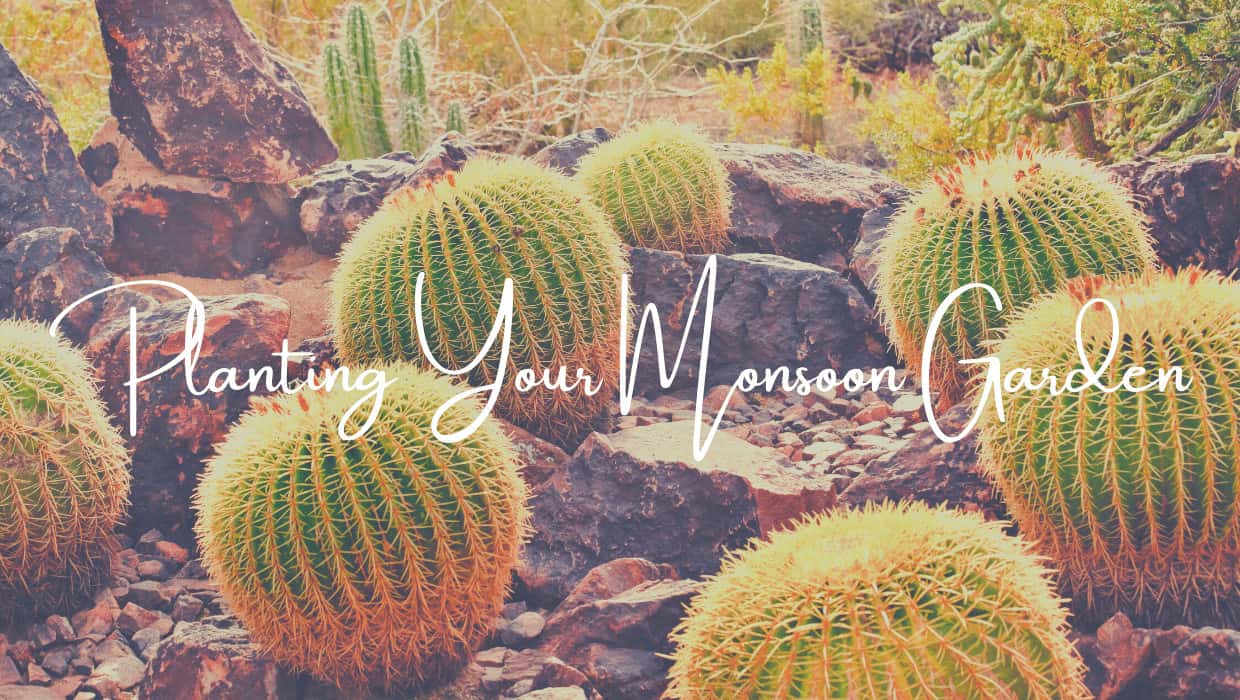- Finding the Right Indoor Plants for Desert Your Home - April 28, 2023
- Common Misunderstanding About Sun Exposure - April 18, 2023
- All about the Arizona Monsoon Season - May 21, 2021
While Arizona can be a great place for growing a garden, the summer months with their full-force desert heat and sun can pose a particular challenge for producing healthy plants. While many vegetables aren’t well adapted to desert summer, consider planting a “monsoon garden” that can take advantage of summer rainfall.
Monsoon gardening is best done with plants that have been long adapted to our low desert conditions and can handle the simultaneous bounty of water and heat to their advantage. Traditional farming methods from our region emphasize the planting of amaranth, beans, corn and squash during the summer rainy season. Planted together, these crops also benefit from each other and offer balanced and complete nutrition, an agricultural system known as “three sisters” planting.
Making a 3 Sisters Plan
The plants that comprise a three sisters arrangement (plus the addition of amaranth!) are best planted directly in the ground. Choose a location for your monsoon garden that gets mostly morning sun, minimizing the hotter afternoon sunlight that can scorch tender plants. Your garden should be amended with a balanced compost to support plant nutrients.
Each plant in a monsoon three sisters garden has a function, and the planting of each component is staggered to best support the growing cycle. Corn and amaranth should be planted first. The quick growing stalks of these plants will provide trellising for your beans. Beans should be put in the ground around 2 weeks after the corn has been planted. Beans help support soil nitrogen. Finally, squash can be planted a week after beans are in the ground. Squash provides leafy shade to cool the earth and protect the roots of your plants.
Look Local
When choosing seeds and plants for a monsoon garden, picking local seeds can give you a head start to success. Seed resources like Native Seeds/SEARCH will have abundant information about regional planting and carry a wide variety of desert plants adapted over centuries to the specific demands of Arizona’s extremes. Native Seeds/SEARCH even puts together a specific “monsoon garden collection” with varieties well suited to this season.
Bean species like tepary beans are a perfect example of a bean type that can thrive in Arizona where other varieties struggle. Tepary varieties are native to the region and have long been a sustaining crop of the region for their drought and heat tolerance as well as their adaptation to the more alkaline soils of the desert.
While there are hundreds of varieties of corn available to the modern grower, Arizona gardening almost demands working with varieties that can specifically withstand our climate. Varieties from Southwestern tribal heritages including Hopi and Tohono O’odham corn were long cultivated to adapt to traditional dry farming methods and are best suited to take advantage of Arizona’s summer monsoons.
Squash also has seemingly limitless varieties, but you should tailor your squash selection to what is best adapted for survival in Arizona’s summer rains. Again, considering local and heirloom squash varieties will give your garden an advantage. Cushaw squash is a great option for the Southwestern gardener.
Keep Up With Your Garden
It is important to care for your garden as it develops. For best results, it may be necessary to add fertilizer and other soil amendments to keep plant development on track. While using drought-tolerant varieties will minimize your dependence on water, if the monsoons do not deliver a suitable amount of rain, your garden will need periodic watering as well to sustain the plants during the hottest days.
Save watering plants for the early morning and water the soil directly, rather than hosing down plants from above. Water on plant leaves can burn them or cause rot or fungus to develop, damaging the plant or even killing it. Consider using a soaker hose or drip tape to provide irrigation to your garden.
A monsoon garden planted now will come to maturity in the autumn. While that may seem like a ways off, part of what makes gardening enjoyable is observing the growth and maturity of your plants as you tend them. Planting a monsoon garden takes advantage of Arizona’s particular desert climate pattern and utilizes it to the best agricultural advantage.
CC Sunscreens
For an enjoyable time in your backyard, consider patio sunscreens from CC Sunscreens. Custom patio screens make your outdoor hangs comfortable by keeping out heat and harmful UV rays. Call us at CC Sunscreens today to learn more about our patio screens.

